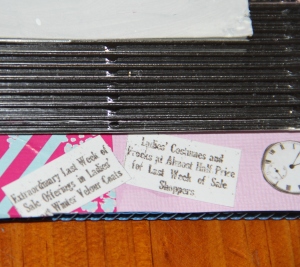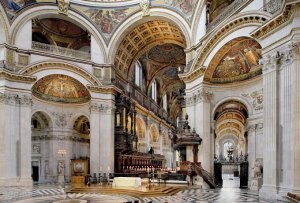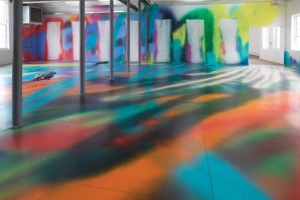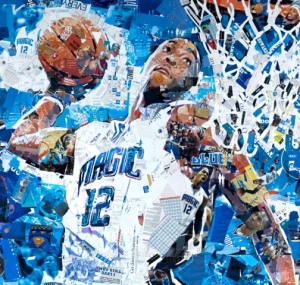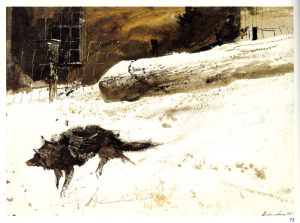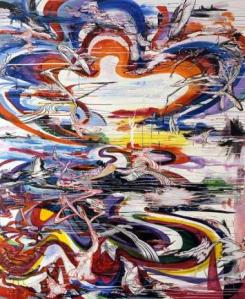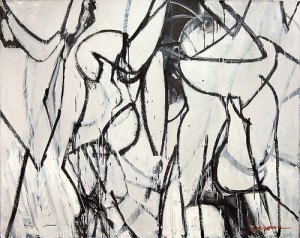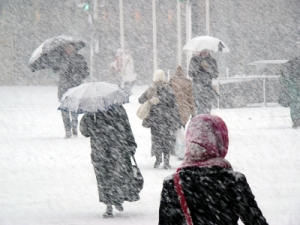STORY
The greatest impact on my life was the loss of my beloved Staffordshire Terrier dog, Lady, euthanasied on Boxing Day 2010. Hence, Lady Love was created to depict this time. Another major event, impacting people on the other side of the world, was a snow blizzard in the east of America. This event caused deaths, major disruption and pain to lives, comparable to my experience at the same time. Accordingly, this has been depicted in Boxing Day Blizzard.
INFLUENCES
The influences to my work were the artists Cy Twombly, Jackson Pollock, Thierry Bisch and Michel Keck. Bisch produced a series of work on pop art animals, being the inspiration for my work, Lady Love. I used vivid colours and carried them through to the Boxing Day Blizzard, to enable them to be perceived as a set.
I was drawn to using text in my work, similar to Twombly. Whilst Twombly used the poetry of Stephane Mallarme, I felt an affiliation with the Lighthouse Families song, “High”. It had always represented my relationship with Lady and continues to make me sad today. Surprisingly, the song contained verses that had meaning to both works.
Next, Kleck’s use of cut out letters was my inspiration to display the verses. And, in the application of paint in Boxing Day Blizzard, Pollock’s “action painting” technique was my motivation.
MATERIALS
In creating the imagery for both works, I used acrylic paint and photocopied text. I used photographs to get imagery. In Lady Love I used the computer to manipulate colours, adjusting the saturation and hue until I had a picture that didn’t appear real life. I then cropped the image, selecting a portion, to give an abstract effect.
Boxing Day Blizzard required thin paint to manipulate into the appearance of snow. I also used the thinned paint to dab on the work for the appearance of a mottled, angry sky. Then, again, rolling the brush between my palms at the right, top, corner of the painting to create droplets. This would enable the picture to look as though the snow was blowing, being that it needed to represent a blizzard. The installation for my paintings incorporated mounting the picture on corflute and then attaching the mount to a larger corflute base. The base was then collaged using fabric and paper.
LEARNING
I have learnt from my work that I can actually paint, something in which I had always believed that I was unable to do. Further, I have realised that I am more creative than I have previously believed, with my abstract being both surprising and pleasing. Until summing up my artwork I had not identified that I had been inspired by the work of so many people, looking back upon the artists that I have reviewed it is evident where I have drawn my ideas. What is more, of all the skills that I have developed in the course of my studies, the technique of colaging has had the great bearing on me. This is a technique that I have never practiced before but will continue to master in my spare time due to it being able to tell a story in so many different ways.
IMAGES

Final Artwork installed

Portion demonstrating painting technique of Lady Love

Portion demonstrating painting technique of Boxing Day Blizzard







